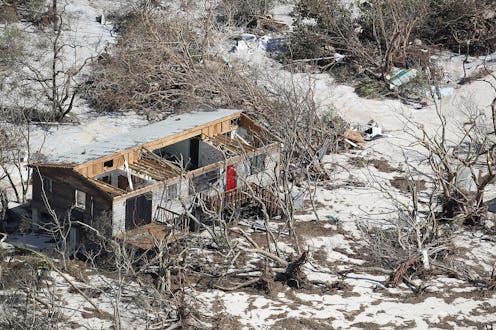
Shortly after two natural disasters — an earthquake and a hurricane — struck Mexico back-to-back, the country now faces yet another one: Hurricane Max, which is forming off Mexico's southern coast. According to AccuWeather, Tropical Storm Max developed into a Category 1 hurricane on Thursday morning local time, and it is expected to make landfall in the afternoon somewhere in Mexico's Guerrero state. This region includes Acapulco, a major seaport and prominent beach resort town.
The U.S. National Hurricane Center has issued a hurricane warning for Mexico's Pacific coastline, between Zihuatanejo and Punta Maldonado, specifying that hurricane conditions were expected in this region within the next 12 hours. The NHS also warned that "torrential rains" in Guerrero and parts of Oaxaca "may produce life-threatening flash floods and mudslides." Finally, the NHS predicted that a storm surge would "produce significant coastal flooding near and to the east of where the center makes landfall."
ABC News reported that as of Thursday morning, Hurricane Max had maximum sustained wind speeds of 75 miles per hour, though it could strengthen before making landfall. According to AccuWeather, however, Max is likely to rapidly weaken as it moves inland. The hurricane was reportedly roughly 55 miles southwest of Acapulco and heading eastward at a speed of approximately 6 miles per hour.
Hurricane Max's impending arrival in Mexico comes on the heels of two other natural disasters. Last Thursday, an 8.1 magnitude earthquake killed at least 95 people, most of whom were located in the southern Mexican states of Oaxaca and Chiapas. Just two days later, Katia, a Category 1 hurricane, struck Mexico's Gulf Coast, and at least two people were killed before it was downgraded to a tropical storm. Although Oaxaca is expecting less rain from Hurricane Max than Guerrero, extensive rain could hinder recovery efforts in the region after last week's earthquake.
The almost-simultaneous occurrence of an earthquake and a hurricane also prompted the Mexican government to redirect aid from the United States to its own population, the Los Angeles Times reported earlier this week. Mexico had initially offered to send food, generators, and medical aid to victims of Hurricane Harvey in Texas, despite Donald Trump's offensive comments about the country. Trump notably did not offer his sympathies, condolences, or any aid to Mexico after either disaster, once again breaking with tradition in his interactions with other countries.
Texas Gov. Greg Abbott said that his state would accept Mexico's offer of aid, but Mexico’s Foreign Ministry said that those resources were now needed at home.
Abbott subsequently released the following statement after the earthquake in Mexico, calling on Texas to reciprocate Mexico's solidarity:
Our hearts go out to the victims of this devastating tragedy and their families. Just as Mexico stood with Texas in our time of need, Texas will stand with Mexico and offer whatever aid and assistance we can to help them recover after this disaster. I ask all Texans to join Cecilia and me in praying for the victims and the people of Mexico this morning.
Mexico's Foreign Ministry thanked Abbott for this statement, and also expressed its “full solidarity with the state of Florida in the face of the severe impact of Hurricane Irma," the LA Times reported.
It was only after this exchange that the Trump administration got in touch with the Mexican government. U.S. Secretary of State Rex Tillerson reportedly called Mexican Foreign Secretary Luis Videgaray to offer his condolences in light of both the earthquake and Hurricane Katia.
Tillerson also reportedly told Videgaray that the American government was prepared to help Mexico with its recovery efforts. Given that Hurricane Max is only hours away from making landfall in Mexico, Tillerson's promise of assistance may soon be tested.